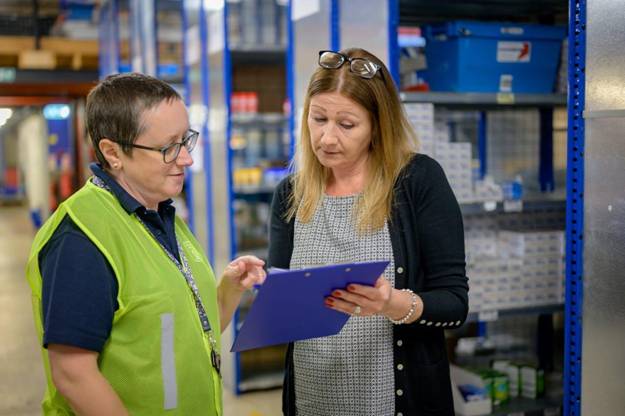
When you’re managing high-value shipments, the risks aren’t limited to “just” theft or damage. They’re buried in the logistics: the permits, insurance gaps, routing constraints, site access, and dozens of other operational variables that don’t apply to routine freight. The margin for error is also smaller because the consequences of mistakes are larger.
This is why professionals who move expensive goods regularly know better than to take shortcuts: many, perhaps even most, shipment problems aren’t caused by catastrophic failures, but small and completely avoidable mistakes. Here are 10 that seasoned operators consistently avoid when moving costly or specialized loads. Because sometimes, knowing what not to do is infinitely more useful than memorizing best practices.
1. Overlooking Specialized Permits
Every state (and sometimes every county) has its own opinion on what counts as oversized or overweight. So a blanket permit from your carrier may not always be enough.
Experts always secure the right permits for state and local regulations, because failing to do so can cause delays, fines, or, in worst-case scenarios, forced offloading mid-route. They also know that enforcement can be annoyingly arbitrary depending on the region and timing (weekend vs. weekday, rural vs. metro, etc.).
2. Misjudging True Oversized Load Cost
If you want to drain your budget quickly, take an oversize load and latch onto a quote per mile, not accounting for route surveys, escort vehicles, night-travel restrictions, or last-minute re-routings.
Experts never misjudge the full oversize load cost because they don’t rely on averages only. They want their budget to reflect reality, so they use dynamic pricing models, updated with live permit costs, escort requirements, and route-specific constraints.
3. Assuming the Destination Site Can Receive the Load
Another thing seasoned operators don’t do? Assume the delivery site can accommodate the load. You shouldn’t either, whether it’s a 50-ton transformer or a precision-machined component.
If you don’t verify things like crane availability, access clearance, surface capacity, or turnaround space in advance, you could end up with a multi-million-dollar asset sitting idle on a trailer, racking up detention fees by the hour.
4. Assuming Declared Value Equals Full Coverage
You’d think declaring your cargo value on a bill of lading means you’re fully covered. Unfortunately, no. Freight liability coverage often caps out well below the actual value, especially for high-dollar items.
Experts double-check cargo insurance, demand certificates naming them as additional insured, and sometimes even layer third-party coverage on top, just in case.
5. Not Checking Carrier Compliance History
A carrier may be available, but do they have the right experience?
DOT compliance reports, safety scores, and cargo-specific credentials aren’t always visible upfront. That’s the reason why top-tier operators dig into FMCSA records, examine incident history, and verify coverage specifics (some insurance policies exclude certain cargo classes, so it’s worth reading the fine print).
They want carriers with clean audits, not just clean trucks.
6. Building Weak or Generic Contingency Plans
Stuff goes sideways. Routes close. Equipment fails. Border agents get extra curious. The point is, things can happen even if everything was right on your end. When they do happen, you want to have a good contingency plan—ideally, more than one.
Pros don’t just have backups: they have backups for the backups. They work out reroute options, have alternate equipment on standby, and pre-arrange comms protocols across their vendors.
7. Neglecting Real-Time Visibility
Having a GPS pin on a screen isn’t real visibility. Experts integrate carrier feeds with internal platforms and assign people to monitor and escalate issues in real time. They want alerts for route deviations, ETAs that adjust based on traffic or weather, and contact points who answer the phone at 2 a.m. if needed.
The point is, if your team can’t escalate issues quickly, visibility means very little.
8. Ignoring the Small Stuff That Breaks Everything
Details kill timelines. Misspelled consignee name? Wrong offload dock? Expired forklift tags at the receiving site? You get the idea.
Experts run logistics like quality control: they double-check vendor instructions, verify local contact info, and audit packing specs. Minor gaps cause major delays when the asset in question can’t just be tossed on another truck.
9. Relying on Static Cost Estimates
The most experienced operators treat shipping estimates like weather forecasts: useful, but subject to change.
That’s why they use dynamic pricing models tied to real-time data, especially when dealing with volatile costs like fuel, labor, permits, and seasonal demand. They don’t get locked into yesterday’s quote and then act surprised when the final invoice explodes.
10. Overloading Internal Teams with Execution Risk
Even smart logistics teams can get overwhelmed if they’re doing too much in-house. This is why professionals outsource parts of execution, but selectively.
They’ll keep strategic control, but loop in third-party specialists for permits, escorts, site prep, and customs clearance when needed. In short, you don’t want to outsource decision-making but execution steps that introduce risk when handled by generalists.





